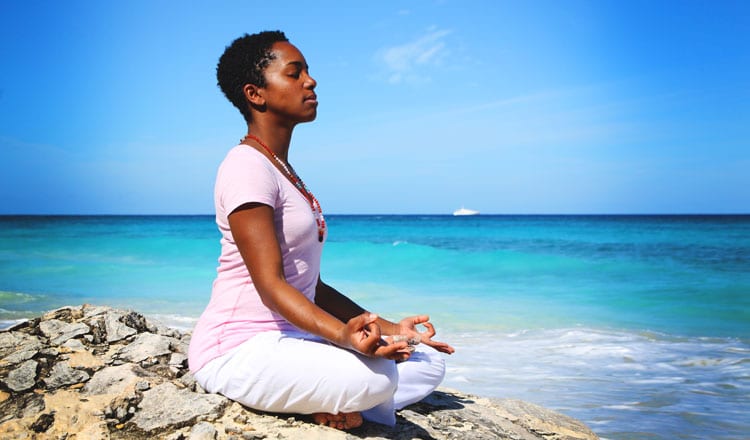Sivananda Bahamas Blog
Expand Your Horizons …
Our Blog
The Full Yogic Breath
When the breath wanders, the mind is unsteady, but when the breath is still, so
is the mind still. —Hatha Yoga Pradipika
Benefits of the Full Yogic Breath
Practitioners at all levels benefit from the Full Yogic Breath, which increases lung capacity, improves oxygen levels, and decreases carbon dioxide levels. The mind is calmed, the nervous system relaxes, and concentration is improved. This helps before meditation or before or after asana practice.
Initial relaxation before practice
Five minutes of deep abdominal breathing in initial relaxation is recommended before yoga practice to fine-tune your nervous system and prepare the body for pranayama or asana practice. For beginners, deep abdominal breathing can be practiced in the Corpse Pose, with palms on abdomen and fingers apart facing the center line of abdomen. When breathing, attention is paid to feeling the movement between the first rib, navel, and hips. Also notice the movement in the back of the body, around the kidneys and lower back and below the waist. Feel the fingers move apart on the abdomen and hands rising when inhaling, and feel the fingers coming together when exhaling and the hands moving down with the abdomen.
Full yogic breath in a sitting position
It is best to be sitting straight in a comfortable sitting position such as the cross-legged position or, if available to you, Lotus. When the spine is straight, prana can move freely. It is also important to open the chest and to relax the shoulders down from the neck and not round the shoulders forward or the chest is constricted. Sitting on a cushion or rolled up mat can help develop the correct sitting posture. Hands are in Chin Mudra position.
When practicing the correct technique, inhale, expanding gradually first the abdomen then raising and opening the rib cage, then finally lifting the collarbone without lifting the shoulders. Be aware of the breath filling up the lungs in the front and the back of the body. Exhale slowly with control and begin by relaxing the abdomen, but keeping the head, neck and spine still aligned; then lower the rib cage and then slightly contract the abdomen to actively empty the lungs. All breathing is through the nostrils.
During asana practice, use the Full Yogic Breath with the developed muscle control learned through practicing it to improve awareness of the spinal alignment, as well as including a few Full Yogic Breath cycles between one asana and the next to replenish oxygen and concentration.
If your body is strong and healthy with much prana, you will have a natural tendency to produce health and vitality in those close to you.
—Swami Vishnudevananda
***
Partly sourced and edited from Yoga: Your Home Practice Companion, published by Sivananda Yoga Vedanta Centre in 2010.








